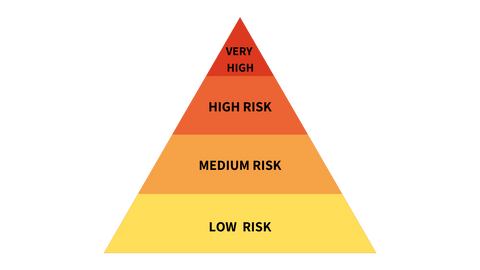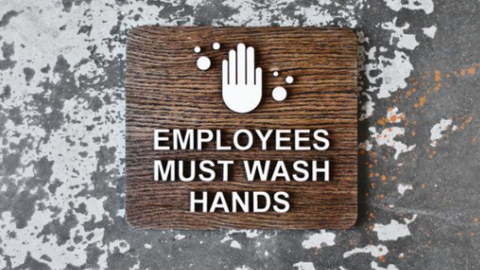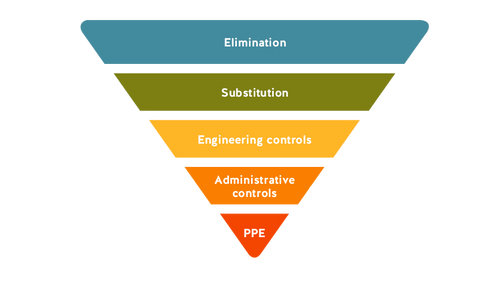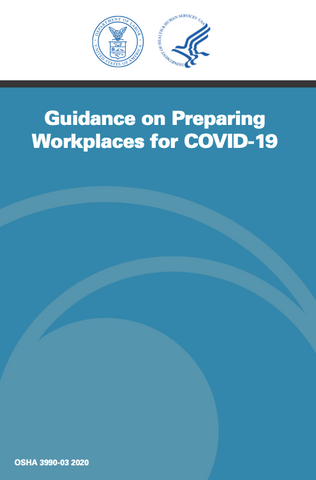How to Prevent Coronavirus in the Workplace
Based on OSHA's Document: Guidance on Preparing Workplaces for COVID-19
For the past few weeks, Coronavirus has been all over the news and based on the forecast from experts, that may not change any time soon.
Most of us have heard the warning that the best way to prevent the illness is to avoid large gatherings. While we can avoid things like public transportation, busy shopping areas, and unnecessary travel, there’s one instance of gathering most of us can’t avoid - work.
In the video above, we discuss OSHA’s guidance on steps all employers can take to prevent coronavirus from spreading in the workplace.
OSHA's Guidance on How to Prevent Coronavirus in the Workplace
This week OSHA published a document called Guidance on Preparing Workplaces for COVID-19, or as most of us have come to know it, coronavirus.
Now, most of us don’t have time to read the entire document, so I’ve gone through and pulled out the highlights that will apply to all workplaces.

First thing first, Develop A Plan
Coronavirus is a respiratory disease that has spread from China to other countries around the world.
Due to the level of outbreak, it has already impacted major world markets and many aspects of daily life, as we have all noticed.
To reduce the impact of COVID-19 on the business, employees, customers, and the public, OSHA recommends that all employers develop a plan to address the specific risks, sources of exposure, and routes of transmission.
Conduct a Risk Assessment to Understand Worker's Potential Exposure to Coronavirus
The first step your business should take is to conduct a risk assessment that’s specific to your type of work. The purpose of the risk assessment is to understand the level of risk your employees may encounter and also identify specific tasks that present the highest level of exposure.
OSHA’s guidance document outlines four different workplace risk levels for COVID-19:

Very High Exposure Risk for Coronavirus
Very High Risk applies to those jobs with high potential for exposure to known or suspected sources of COVID-19 during specific medical, postmortem, or laboratory procedures. This includes healthcare workers treating coronavirus patients, laboratory personnel collecting or handling specimens from known or suspected coronavirus patients, and morgue workers performing autopsies.
High Exposure Risk for Coronavirus
High Exposure Risk also includes jobs with high potential for exposure to known or suspected sources of COVID-19 during specific medical, postmortem, or laboratory procedures. The differences is, this category applies to healthcare workers and support staff who must enter coronavirus patient rooms, medical transport workers, and mortuary workers.
Medium Exposure Risk for Coronavirus
Medium exposure risk jobs include those that require frequent close contact, meaning within six feet, of people who may be infected with coronavirus but who are not known or suspected patients. This group can include employees who have frequent contact with international travelers or the general public like those who work in schools, or high volume retail settings.
Low Exposure Risk for Coronavirus
The last category is lower exposure risk. This applies to jobs that do not require frequent contact with people known or suspected of being infected with coronavirus or frequently interacting with the general public. Workers in the category have minimal contact with the public and other coworkers.
After assessing the risk, decide on the most effective steps you can take to reduce the potential for infections to spread in your workplace.
OSHA’s document gives specific examples of hazard mitigation steps that apply to each level of risk. For the purposes of this article, we are going to focus on the steps all employers can take to lower risk.

Four Steps All Employers Can Take to Help Reduce Employee’s Risk of Exposure to Coronavirus
Here are four steps all employers can take that can help reduce employee’s risk of exposure to coronavirus:
1. Develop a plan to prevent infectious disease and a plan of how to respond to cases in the workplace. The plan should include the level of risk at various worksites and in specific tasks and controls necessary to address those risks.
It should also look at how to account for increased employee absenteeism, how to socially distance employees through staggering shifts, working remotely, and other measures, and how to respond to interrupted supply chains and delayed deliveries. 2. Prepare to implement basic infection prevention measures such as:
2. Prepare to implement basic infection prevention measures such as:
- Frequent hand washing
- Providing hand sanitizer that contains at least 60% alcohol
- Encouraging employees to stay home if they are sick
- Reminding people to cover their coughs and sneezes
- Providing customers and members of the public with tissues and trash receptacles
- Exploring whether flexible work policies like staggered shifts, working remotely, and conducting virtual rather than in-person meetings is a possibility
- Implement good housekeeping and make sure routine disinfection of surfaces and equipment is taking place
3. Develop procedures for prompt identification and isolation of sick people, if appropriate. What this could include is encouraging employees to self-monitor for signs and symptoms and reporting when they are experiencing symptoms. If it is appropriate, you may want to develop training and policies to move potentially infectious employees to a location away from workers, customers, and other visitors.
4. The next step is to develop, implement, and communicate about workplace flexibilities and protections.
- What this means is to encourage sick employees to stay home
- Make sure that sick leave policies are in place and are also consistent with public health guidance and that employees are aware of these policies
- Talk with companies that provide your business with contract or temporary employees about the importance of having sick employees stay home.
- Do not require a healthcare provider’s note for employees who are sick with acute respiratory illness to validate their illness or return to work.
- Maintain flexible policies that allow employees to stay home to care for sick family members
- Be aware of workers concerns about pay, leave, and other issues that may arise during infectious outbreaks
-
Work with insurance companies to provide information to workers and customers about medical care in the event of an outbreak

Additional Tips for Preventing Coronavirus in the Workplace
Additionally, you may want to consider the following mitigations based on your specific areas of risk.
Engineering Controls:
- Installing high-efficiency air filters
- Increasing ventilation rates in the work environment
- Installing physical barriers such as clear plastic sneeze guards
- Using a drive-through window for customer service
Administrative Controls:
- Discontinue non-essential travel
- Develop emergency communication plans
- Provide workers with up-to-date education and training
- Post hand-washing signs in restrooms
Personal Protective Equipment:
Depending on the specific circumstances of your workplace, consider offering face masks to ill employees and customers, provide latex gloves or other PPE where necessary.

Remember, the first step to prevention infection is to identify your level of risk and then apply the controls that make the most sense for your workplace.
As the saying goes, an ounce of prevention is worth a pound of cure.




1 comment
Florido
How covid information is important now in this pandemic specially in the workplace
Leave a comment
All comments are moderated before being published.
This site is protected by hCaptcha and the hCaptcha Privacy Policy and Terms of Service apply.